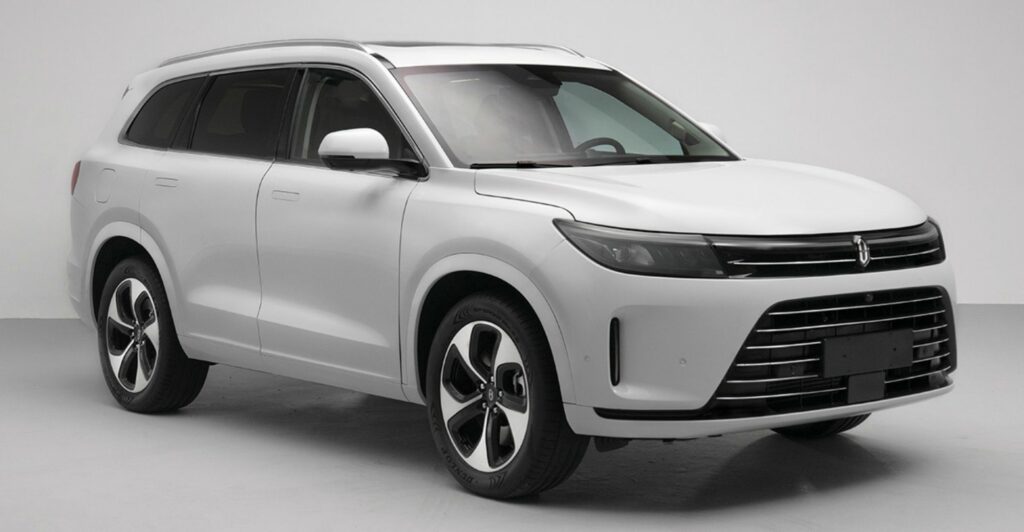On April 26th, a traffic accident occurred on a highway in Shanxi Province, China, involving an AITO M7 vehicle. After colliding with a maintenance vehicle, the car caught fire, tragically resulting in the death of all three occupants. Subsequently, on April 28th, AITO issued a statement stating that, according to national platform data access regulations, the vehicle was traveling at a speed of 115 km/h at the time of the accident, the airbags deployed normally, and the characteristics of the power battery pack were all normal.
Later, some media reported that the vehicle was equipped with a Bosch intelligent driving solution. However, Bosch quickly denied such claims, stating that the vehicle involved in the accident did not have a Bosch intelligent driving system (including AEB).
The core technical issue of major controversy in this accident is the AEB, or Autonomous Emergency Braking system. This system continuously monitors the driving environment in front of the vehicle and automatically activates the vehicle’s braking system when a collision risk is detected, slowing the vehicle to avoid or mitigate the collision.
After the accident, many industry insiders questioned on social media why the AEB did not trigger.
Public information shows that the vehicle involved in the accident was an entry-level non-intelligent driving version, which did not have Huawei’s advanced intelligent driving assistance system. The working range of the non-intelligent driving version AEB is 4km/h to 85km/h. The automaker responded by stating that the vehicle was traveling at 115 km/h at the time of the accident. In other words, the speed of 115 km/h at the time of the collision was significantly beyond the AEB’s triggering range.
About half a year ago, He Xiaopeng, CEO of Xpeng Motors, and Yu Chengdong, Executive Director, CEO of Terminal BG, and Chairman of Intelligent Car Solution BU of Huawei, had a debate about AITO’s AEB.
On November 1, 2023, He Xiaopeng, in an interview with the media, talked about the AEB function, “A competitor talked about AEB, I think 99% is fake, it is a fraud, those promotions are not officially released by the company, all from short videos. Our people also asked, its AEB can’t be turned on at all, there are too many cases of mistaken braking on the road.”
He Xiaopeng also said that the competitor treats users as guinea pigs, “The AEB talked about in the industry is mainly longitudinal AEB; when it triggers, the speed in most cases should be within 60 kilometers per hour. If the speed is too high, once a mistaken brake occurs, it will be a huge scare for users, which is absolutely unacceptable.”
Subsequently, Yu Chengdong posted four messages in his WeChat to counter He Xiaopeng, saying, “Even what AEB is, there are car company heads who still don’t understand it! It’s almost the same as someone saying intelligent driving is a scam!”
Yu Chengdong stated that some people lack basic understanding of the industry’s technological progress and future development, “Some car companies, busy with intelligent driving all day, the AEB proactive safety test results are very poor, and when asked, they surprisingly haven’t even done the basic function of AEB, which surprised me a lot!”
After several rounds of debate, He Xiaopeng posted on Weibo saying, “This morning I discussed the technology route with Old Yu, I believe that this kind of technical controversy will ultimately benefit users. We will also expand AEB functionality through OTA.”
With the debate between the two, AEB has attracted more and more attention. Industry insiders, including Li Xiang, CEO of Li Auto, have publicly called for car companies to standardize AEB.
In addition, after the accident, rescuers could not open the car door and had to smash the window to rescue people. The fact that the car door could not be opened after the collision also raised questions.
In the AITO M7 owner’s manual, it is clearly written that, “When the vehicle is involved in a collision, and the system receives a collision signal,” the vehicle will unlock automatically. However, AITO has not publicly responded to the issue of the vehicle failing to unlock.
Regarding the situation where the car door could not be opened in this accident, according to automotive industry insider Liu Yi cited by Chinese media The Paper, it is necessary for the vehicle to lock while driving to protect the safety of the driver and passengers, otherwise various accidents such as people being thrown out in a car accident and doors being mistakenly opened while driving may occur. But after an accident, whether to unlock, and how long to unlock the vehicle, there are currently no mandatory requirements, generally each manufacturer designs it themselves.
“The car door is a collision part, and it is very common for the door to not open once the mechanical structure changes after a collision. This is not a particularly prominent issue on fuel vehicles, as the escape time is sufficient. After an electric vehicle collides, the entire vehicle instantly explodes and cannot be extinguished, and the issue of car door unlocking may indeed need to attract the attention of policy makers.” Liu Yi said.
SEE ALSO: Geely-backed Caocao Inc. Goes for Hong Kong IPO
>>> Read full article>>>
Copyright for syndicated content belongs to the linked Source : Pandaily – https://pandaily.com/aeb-became-the-core-of-debate-surrounding-the-deadly-aito-m7-accident/
